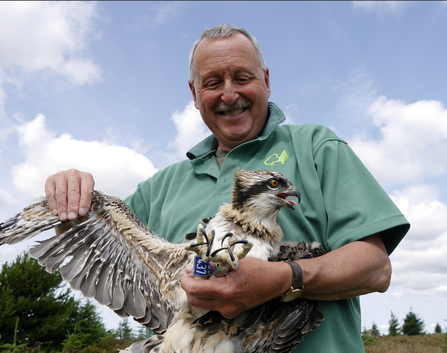
Forestry England ornithologist Martin Davison rings 38 day old male osprey chick Elsin in Kielder Water and Forest Park. Elsin is one of the first to be born to a father who himself hatched in the 155,000 acre Northumbrian beauty spot since the once extinct creature returned in 2009. Image by: Forestry England.
